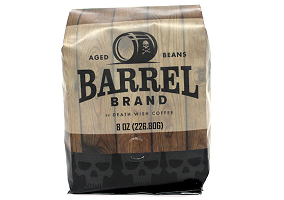Innovation Insight: Death Wish Barrel Brand Coffee
This week Gama returns to the prevalent themes of male-oriented positioning and coffee connoisseurship, putting under the microscope a new product that combines masculine branding with the gourmet associations of aged wine through the medium of coffee – Death Wish Barrel Brand Coffee.
New to consumers in the US, Death Wish Barrel Brand Coffee – roast coffee aged in spirit casks – is the latest launch from Death Wish Coffee, a relatively new player on the gourmet coffee scene which first hit the headlines in 2013 by launching what it claimed to be the world's “strongest” coffee. In a marketing approach that bears comparison with another launch recently explored by Gama – Stu's Sour Elixir 100% Pickle Juice – the product's ‘extreme’ positioning, underlined by black packaging with a skull and crossbones motif and a focus on intensity of experience, placed it among a new breed of products overtly targeting men through bold design and notions of 'challenge', potency or 'danger'.
With Barrel Brand Coffee however, Death Wish Coffee is tempering this positioning and placing greater emphasis on a refined and adventurous sensory experience. While its tagline still invokes a sense of boldly defying conventions (“Some may say mixing coffee with spirits is irresponsible, we like to think of it as revolutionary”), the brand is also making a play for a gourmet audience by targeting “those with a sophisticated palate who are coffee/spirit connoisseurs”. In a process that recalls the maturing of a fine wine, the coffee is aged in spirit casks, a 45-day procedure that “allows for the infusion of fine spirits directly into premium green coffee beans” and achieves a “well-balanced and exceptional cup of coffee”, according to the company. Consumers can choose from coffees that are variously aged in whisky, rye or rum casks.
Death Wish Coffee’s ‘aged coffee’ concept can be seen as a logical extension to coffee connoisseurship: the phenomenon has already borrowed heavily from the language of fine wines with its emphasis on origin and craftsmanship in achieving a superior, sophisticated product. Such techniques could allow for new expressions of creativity in the gourmet coffee segment, without the need to resort to flavourings or other additives that could be seen as ‘adulteration’ by purists. Using a technique validated in the world of fine wines, producers can achieve a degree of differentiation without, crucially, undermining the integrity or authenticity that is key in appealing to a 'connoisseur' audience.

